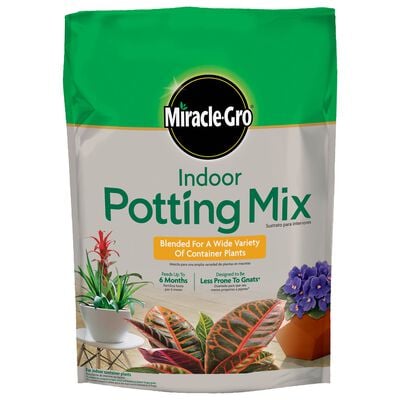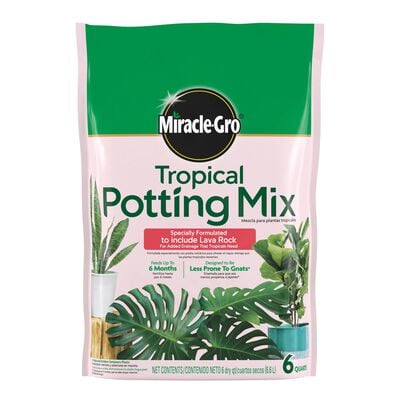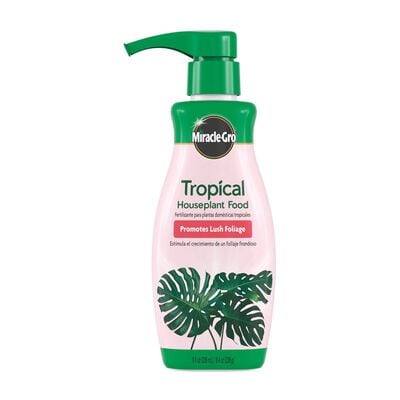
Summer Care for Indoor Plants
For houseplants, there's no such thing as a summer break.
Are you finding yourself distracted by sunny days and gentle breezes? Do you spend every waking moment outdoors, admiring your showy perennial blooms and bountiful vegetable garden? Though summertime may have you making excuses to ignore your indoor chores, there's one you absolutely can't forget: caring for your houseplants!
Indoor plants beautify your home in every season and don't ask for much in return. But they do crave your attention, especially in the summer months. Show them some much-deserved love and affection with these simple, summer houseplant care tips:
1. Recheck Sun Exposure
Plants can't wear sunscreen, so they rely on you to keep them safe from the scorching summer sun. Summer's seasonal changes bring longer days and more intense sunlight that may require rearranging your indoor plants.
Watch where the light falls in each area of your living space and move your plants accordingly. You may find that a once-protected windowsill becomes overwhelmingly sunny and scorching hot, and a bright, south-facing space now gets more shade than sun.
How to tell if your plants are unhappy? Too much sun causes scorched leaves and limp foliage. Too little causes slow growth, leggy stems, and pale, smaller, dropped, or dead leaves. If your usually perky plants are looking dreary, dried out, or otherwise down in the dumps, give them a change of scene. (Read more about finding the best place for houseplants.)
2. Keep an Eye on Temperature and Humidity
Call them boring, but houseplants like it best when the conditions around them stay the same. Strive for a consistent room temperature of 70-80 degrees Fahrenheit and maintain some humidity in the air. You can increase indoor humidity by clustering plants close together, using a humidifier in the room where you keep your plants, or frequently misting the air around them (not their foliage) with water from a spray bottle.
Unlike humans, houseplants don't enjoy cool breezes. Fans, air conditioners, and even open windows can drastically change a room's temperature and dry out the air, stealing moisture from your plants' soil and damaging your plants' delicate foliage. Avoid placing plants in line with a blowing fan or air conditioner, or directly in front of an open window or door—a sudden gust could even topple them to the floor! Relocate your plant to a different spot if you see its leaves swaying in the breeze.
3. Water Whenever the Soil is Dry
Houseplants aren't known for being all that demanding, so it may surprise you when they start asking for more water, more often. Summer's hotter temperatures, increased sunlight, decreased humidity, and rapid growth means your indoor plants will need consistent thorough watering. Set a watering schedule and stick to it! Check the soil in each pot daily by pressing into the top inch or so with your finger. If it's dry, it's time to water. Use a watering can with a spout that can direct moisture to the soil around each plant's base—right where it's needed!
4. Feed Once a Week
Summer's warmer air and additional sunlight make some indoor plants grow like weeds! Growth spurts use up a lot of energy—and work up your plants' appetites—so you'll want to replenish the soil with healthy nutrients. Provide weekly feedings of Miracle-Gro® Indoor Plant Food while watering or by applying directly to the soil (be sure to follow directions).
5. Keep Plants Clean and Pest-free
Sure, open windows bring in the fresh air, but they can also invite unwanted dust, pollen, and (sometimes) pests. When dust settles on foliage, it can block the air and sunlight needed to reach the plant for healthy growth.
It's easy to clean dust from your indoor plants. Schedule a weekly "bath time" and use a damp cloth or paper towel to gently wipe dust from foliage. For plants with shiny, thick leaves (like ficus and peace lily), a damp sponge works best. Avoid using water on cacti and plants with "fuzzy" leaves (like African violets), though—use a soft, dry paintbrush instead.
At the same time, inspect your houseplants for sneaky pests like gnats, mealybugs, and mites. They may hide in the soil or on the undersides of leaves, or leave behind tell-tale signs like speckles, pale spots, or silky or cottony webs. If you notice signs of pest infestation, remove and clean the ailing plant immediately, and keep it separated from the others until you can diagnose and treat the problem.
6. Repot if Needed
Sometimes your houseplants' summer growth may be so vigorous that they'll begin to outgrow their containers. If you find yourself watering more frequently, see roots or water running straight out of a pot's drainage holes, or notice slowed growth, your plant is trying to tell you that it's feeling cramped and needs more space.
Healthy, growing houseplants respond well to repotting in the spring and summer. Give crowded roots room to spread by repotting plants in slightly wider containers filled with Miracle-Gro® Indoor Potting Mix, a specially formulated soil that easily re-wets and retains moisture. (Plus, it naturally resists houseplant pests like fungus gnats!) If a houseplant shows signs of stress or is in bloom, though, it's best to wait to repot.
With proper summer houseplant care, your indoor spaces can be as green and inviting as your backyard garden … and provide a spark of vibrant life for those days when you're stuck inside. For more info on caring for houseplants, be sure to check out our Top Tips for Indoor Growing.


